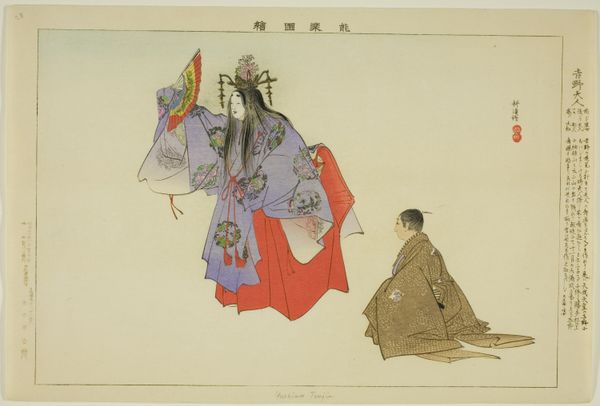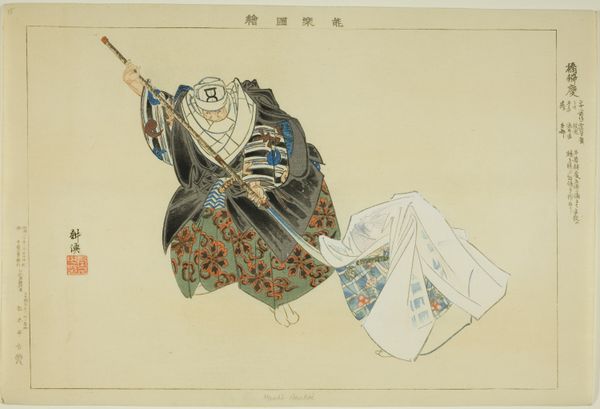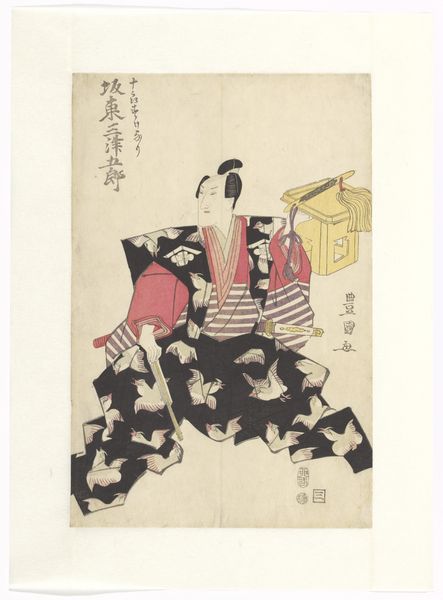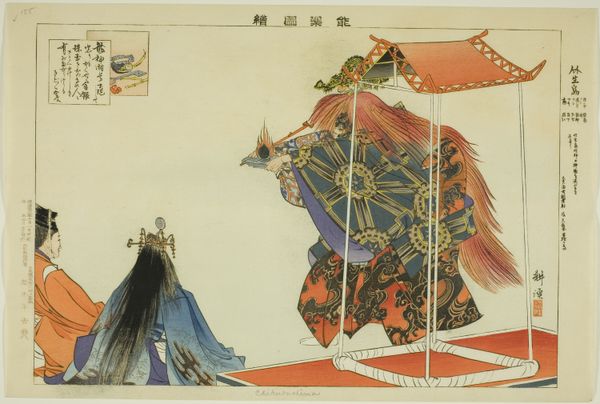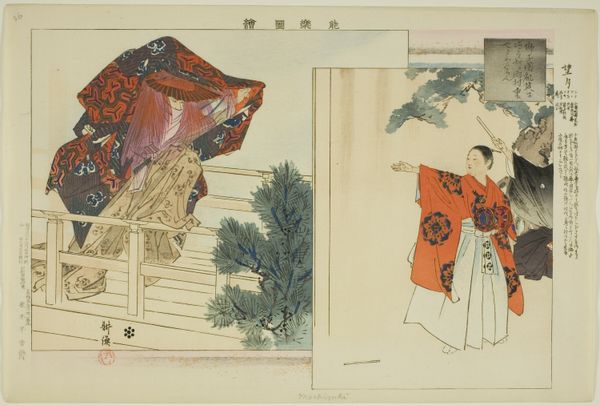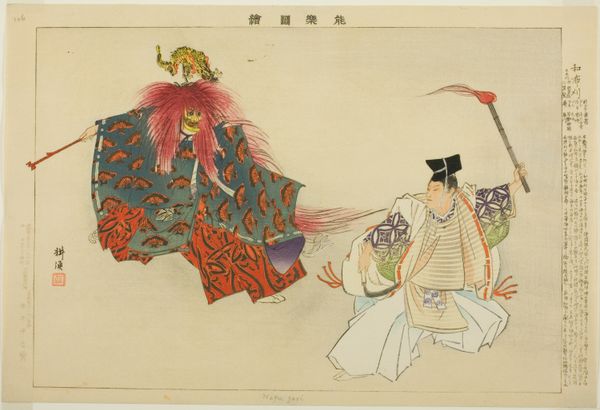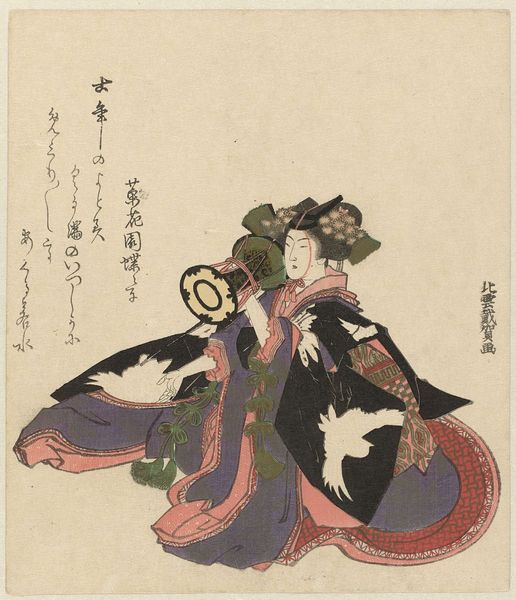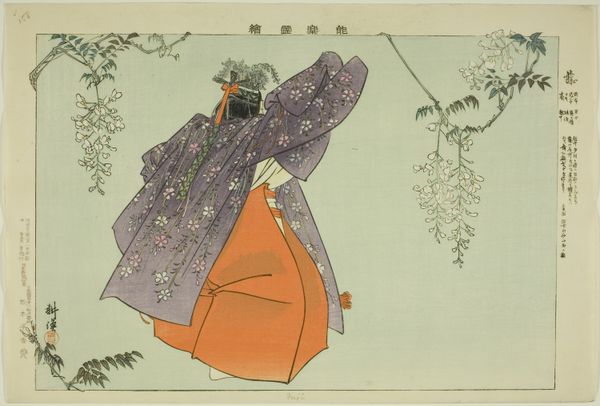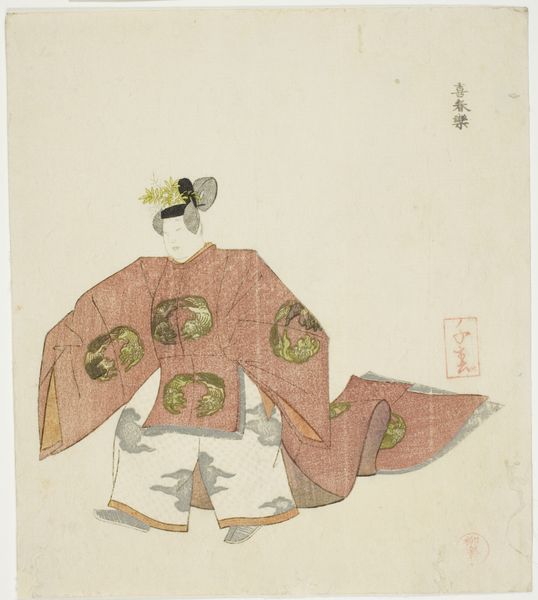
Fuku, from the series "Pictures of No Performances (Nogaku Zue)" 1898
0:00
0:00
Dimensions: Approx. 25.2 × 37.4 cm (10 × 14 4/3 in.)
Copyright: Public Domain
Editor: Here we have Tsukioka Kôgyo's woodblock print "Fuku, from the series 'Pictures of No Performances (Nogaku Zue)'", created in 1898. There's something about the layered effect and visible wood grain that I find particularly striking. How do you interpret the impact of the printing process itself in this work? Curator: The layering you observe isn’t just aesthetic; it's central to understanding the materiality and labor involved. Consider the separate blocks needed for each color, the skill of the carvers and printers, and the economic system supporting this production. How does appreciating the 'means of production' alter your understanding of what is traditionally deemed 'high art', and also the cultural meaning behind this character from Japanese Noh theatre? Editor: That's interesting. I hadn’t considered how the economic structure influenced the artistic choices so directly. Knowing this was a commercial print, made in multiples for wide circulation… Curator: Exactly. Ukiyo-e prints blurred the line between art and craft. The widespread distribution meant that artistic expression wasn't confined to an elite audience, and it reflects a certain democratizing potential through its mode of production and circulation within the local context of 19th Century Japan. Does that perspective influence your reading of Fuku's costuming, pose, or narrative elements? Editor: I guess I had originally seen it as simply a snapshot of traditional Japanese culture. But knowing the mechanics of its creation makes me reconsider how it participated in *shaping* that culture through circulation. I see how these “pictures of no performance” weren’t just records; they were active cultural objects in a thriving entertainment industry. Curator: Precisely! The material conditions shaped the message, reaching diverse audiences. Consider the paper, the ink, the wood—these are not neutral carriers of an image, but active agents in its meaning. It changes your view, doesn't it? Editor: It really does. Thinking about the process itself adds so much more depth to my understanding of this work. I appreciate it! Curator: And hopefully you’ll take a more critical eye toward all art, wondering, how was it made and for whom, rather than simply what is it about.
Comments
No comments
Be the first to comment and join the conversation on the ultimate creative platform.


